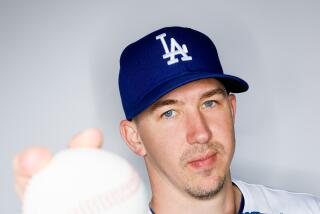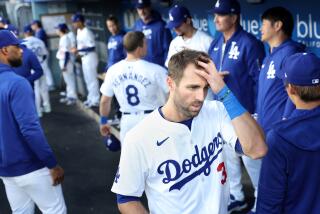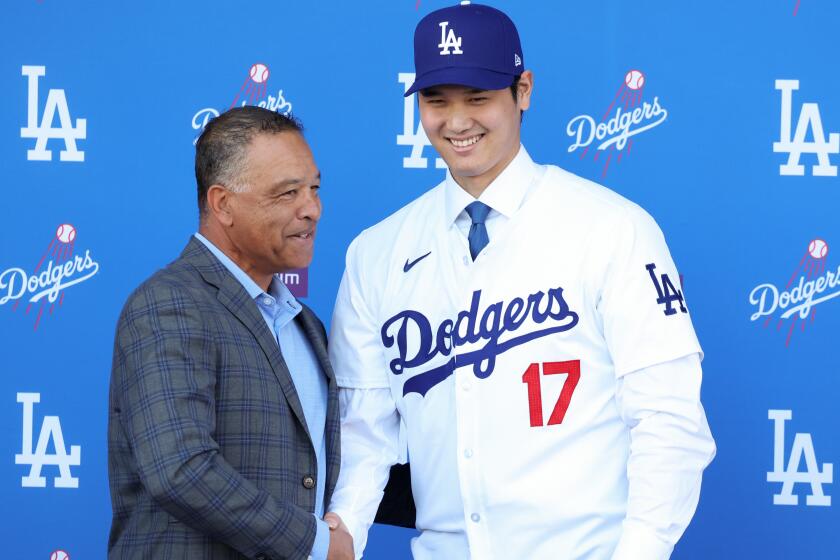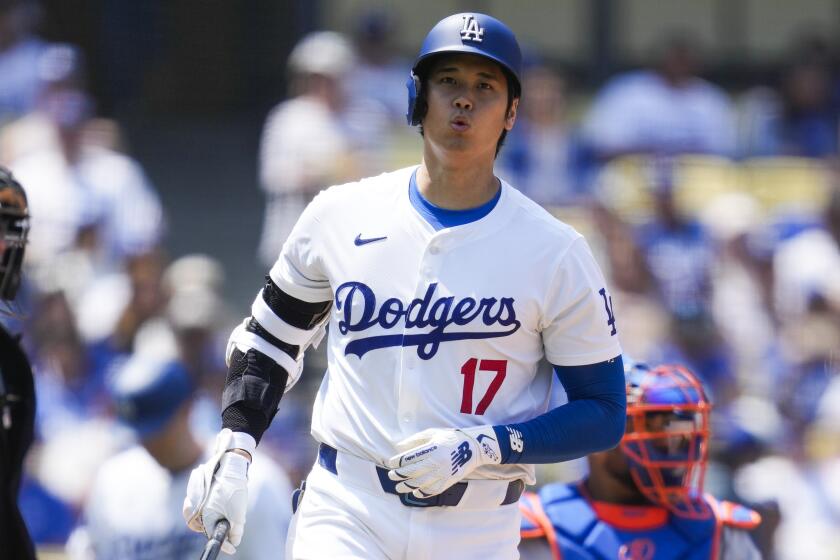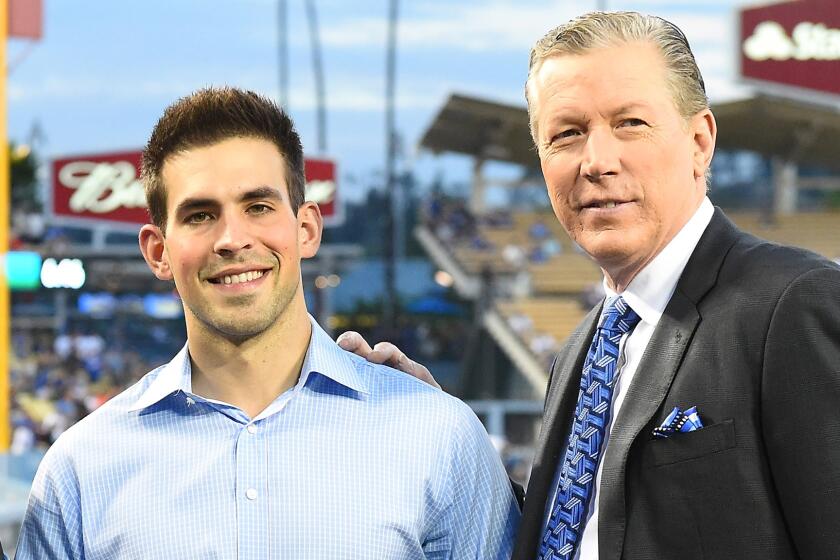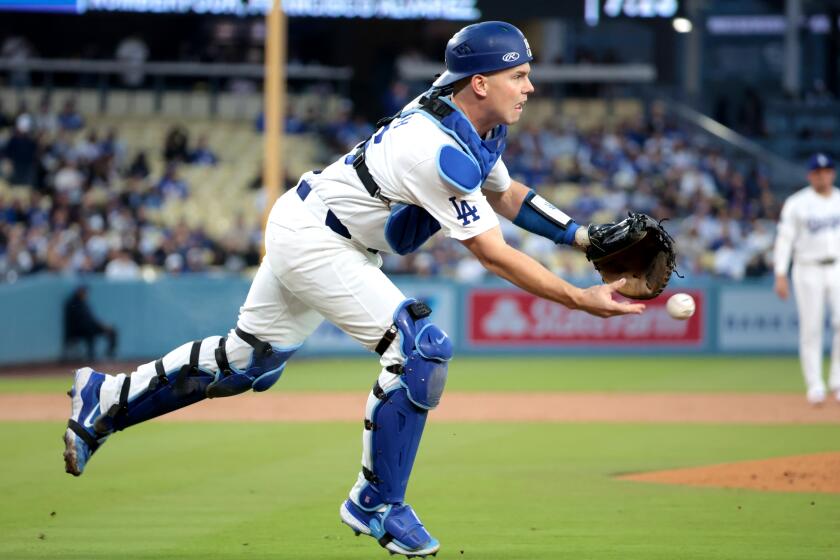Blue and gray
When Manny Ramirez rejoins the Dodgers lineup Friday after a 50-game suspension for use of a banned medication, fans will finally have their chance to transfix the black sheep with stares of disapproval. And they will. We love to pretend our baseball team is shinier and holier than others.
When team President Walter O’Malley brought the Dodgers west for the 1958 season, he used the move to polish their image: No more would his team be called the Bums. In the decades that followed, his players were the last to be permitted sideburns; their uniforms were the last to undergo pajamafication. Dodger Stadium’s music was the last to turn from polka toward metal; its parking-lot patrol was among the first to harass tailgaters. Even as ownership passed from the O’Malley family to Rupert Murdoch and then Frank McCourt, the ballpark’s ushers retained their straw boater hats.
Over the years, the team has been lucky dodging drug-related bullets. Star reliever Eric Gagne and slugging catcher Mike Piazza were both linked to steroids -- but only after leaving the Dodgers. In 1981, outfielder Lou Johnson admitted to a longtime cocaine addiction that kicked in only after the Dodgers traded him in 1967. The ‘60s stolen-base champ Maury Wills was popped for powder in 1983, more than a decade after he shed the blue. Former Dodger Lee Lacy was slapped with a suspension following the Pittsburgh cocaine trials of 1985 and 1986. Power hitter Darryl Strawberry took a coke suspension after being traded to the Giants in 1994.
Yes, there’ve been a few Dodgers whose substance intake besmirched the blue while they still wore it, notably ‘80s reliever Steve Howe. But the Dodgers have laundered most of their stains behind clubhouse doors.
In our thirst for rectitude, we tend to forget that Dodger Stadium itself stands on a site originally acquired by the city for low-income housing (but never converted to that use), and that park construction required bulldozing the homes of thousands of Latino renters and squatters.
Sport is a business best perceived in shades of gray rather than blue. It isn’t Ramirez’s fault that Los Angeles prefers to elevate its baseball players above the general human mire. But times change, and exceptions were made for him here, as they have been elsewhere all his life. If Dodgers Manager Joe Torre had any doubts whether his own old-school values found expression in Ramirez, all he had to do was take a squint at the hair. Allowing Ramirez to keep his dreadlocks was a business decision; mandatory barbering was for ordinary athletes.
Similarly, the Dodgers made the business decision to pay Ramirez more than his cleaner-cut teammates. And Manny, having made the business decision to avoid scrutinizing his medicine intake, delivered more results. Life is full of accommodations.
We expect athletes, particularly those wearing the Dodgers uniform, to act as role models. But Manny didn’t get into baseball to make parents like him. A few youths may imitate his mistake, just as they’ll copy gangsters, corporate thieves and slimy politicians. The majority, though, will emulate his batting psychology and charity work; the medical matter won’t endanger their fragile souls.
Ramirez’s sin wasn’t a rare aberration among athletes, here or elsewhere. Yes, we should monitor drugs and scan the horizon for the next shortcut to prowess. But let’s conserve our dwindling reserves of outrage for deadlier infractions.
More to Read
Are you a true-blue fan?
Get our Dodgers Dugout newsletter for insights, news and much more.
You may occasionally receive promotional content from the Los Angeles Times.
